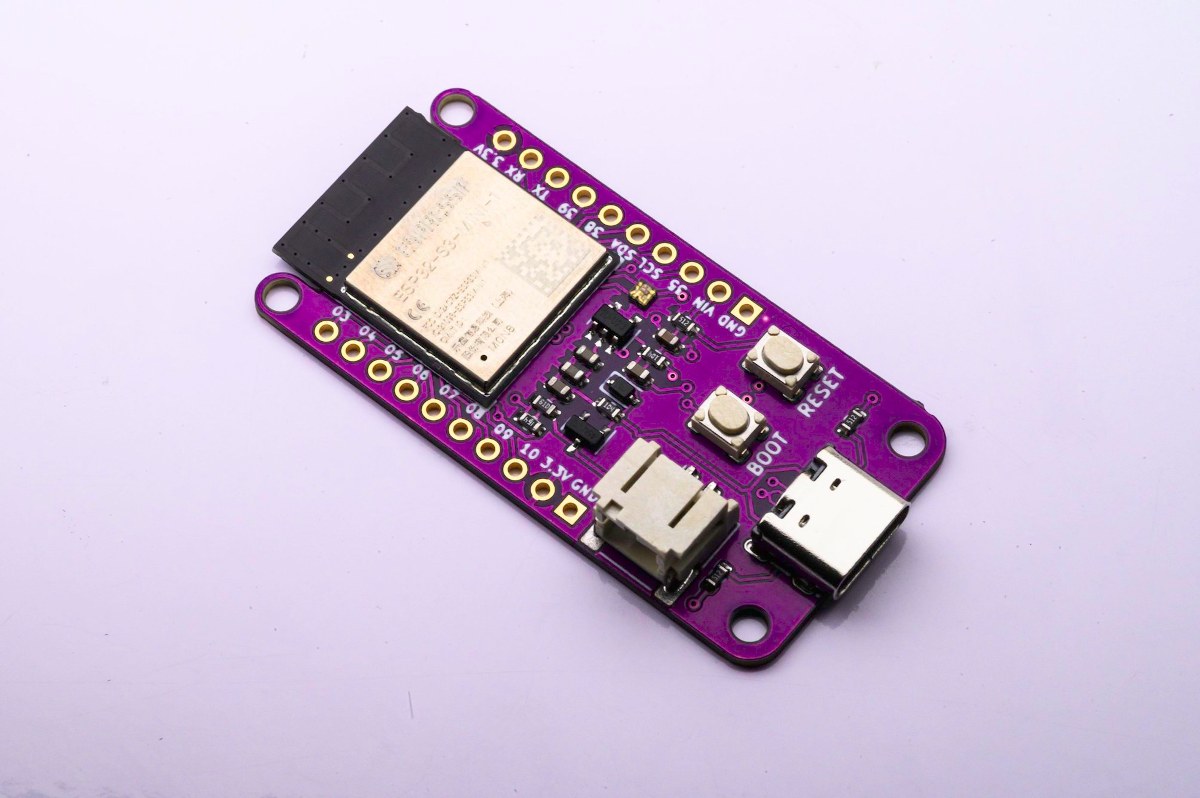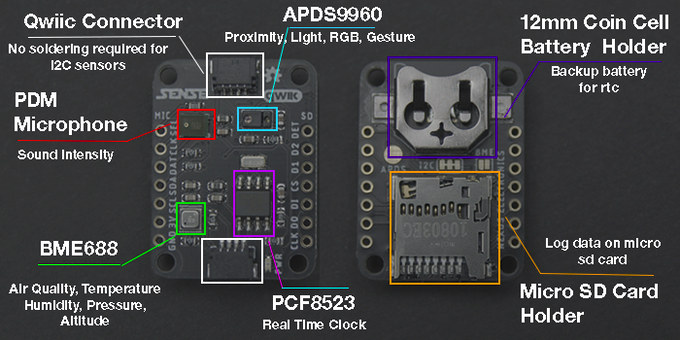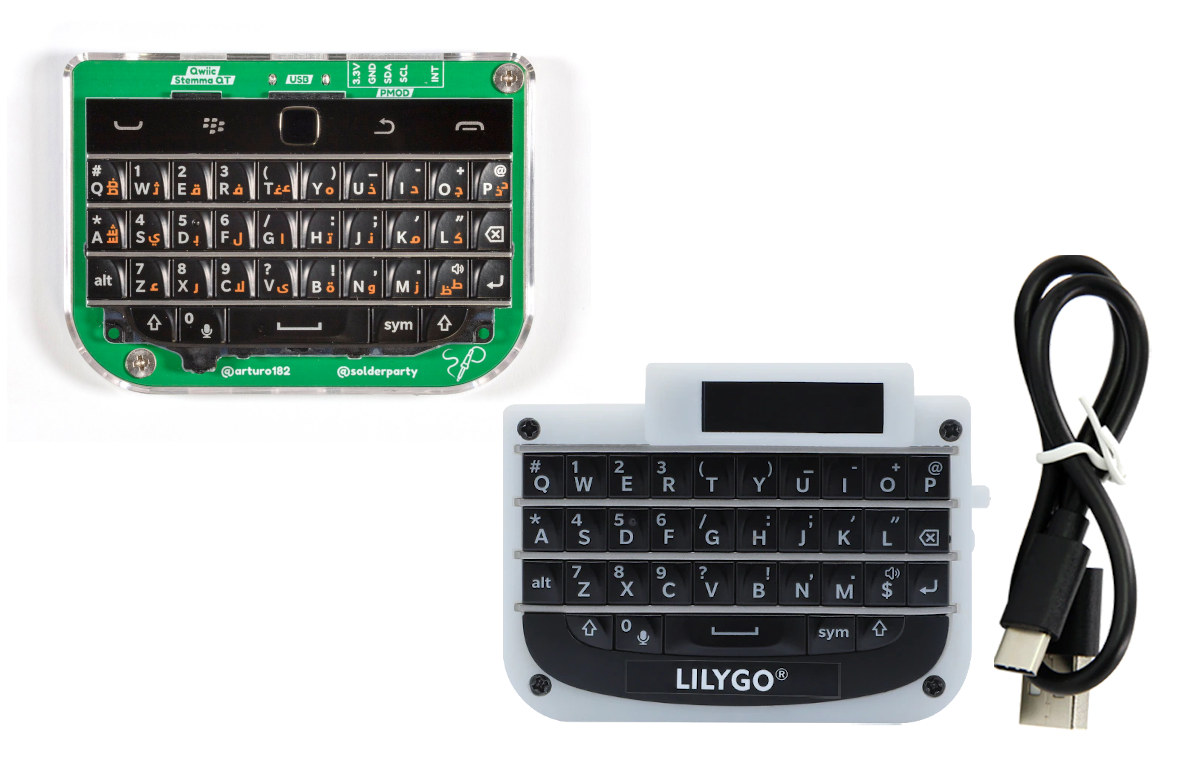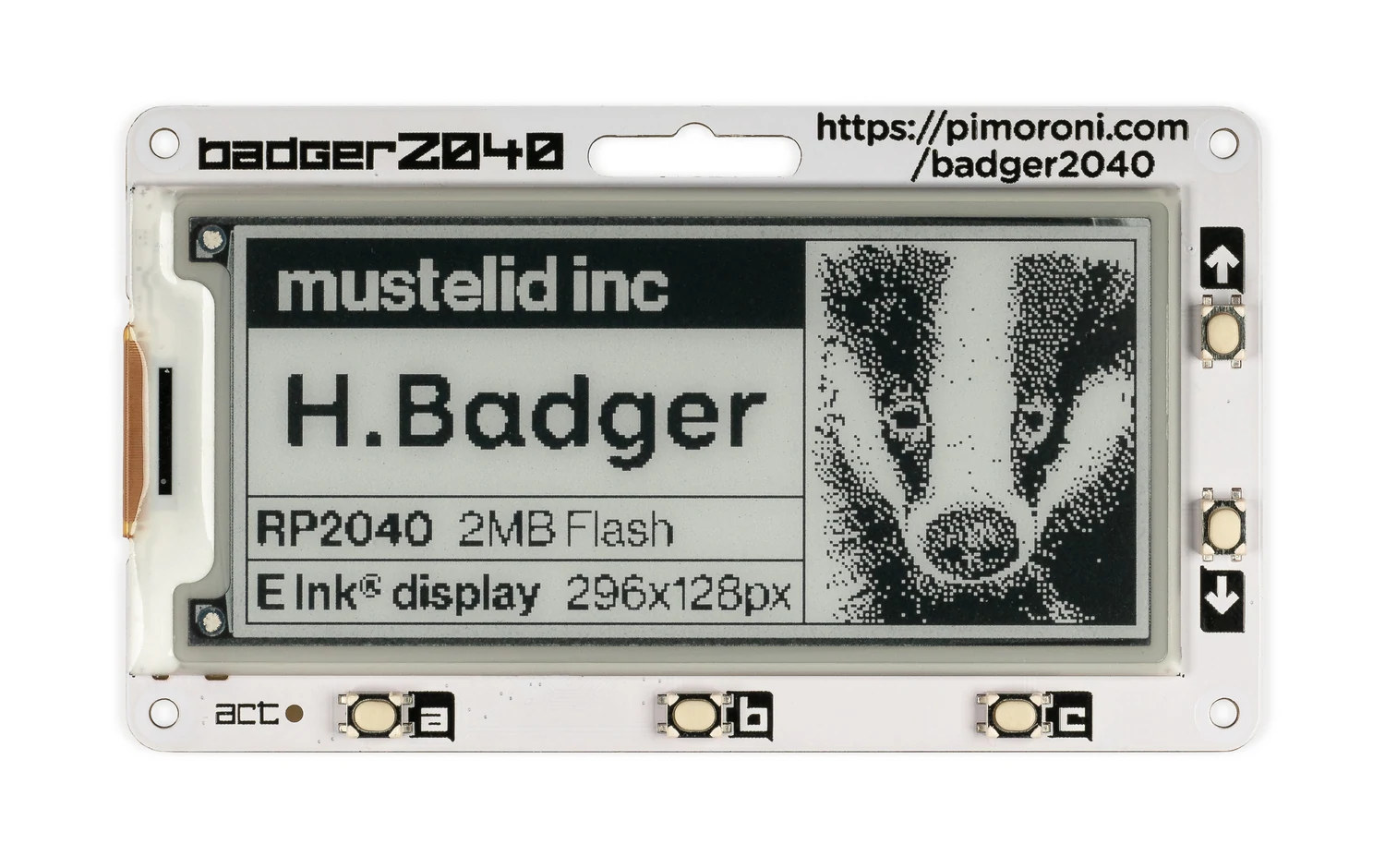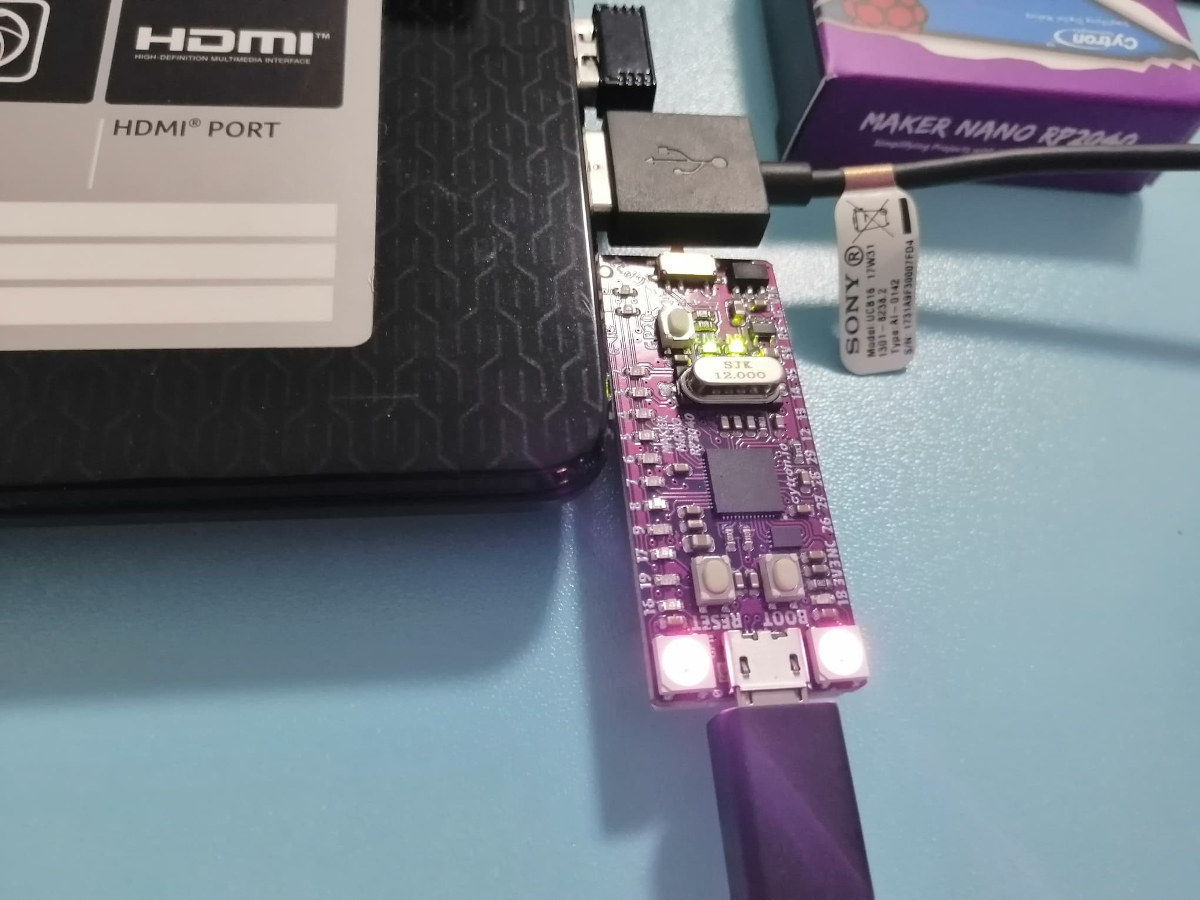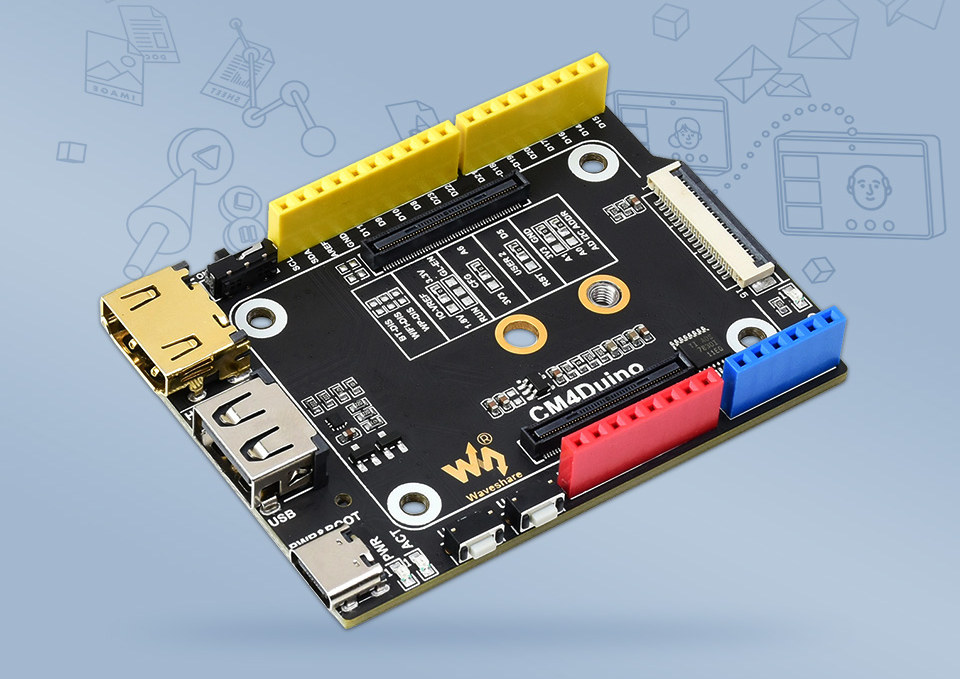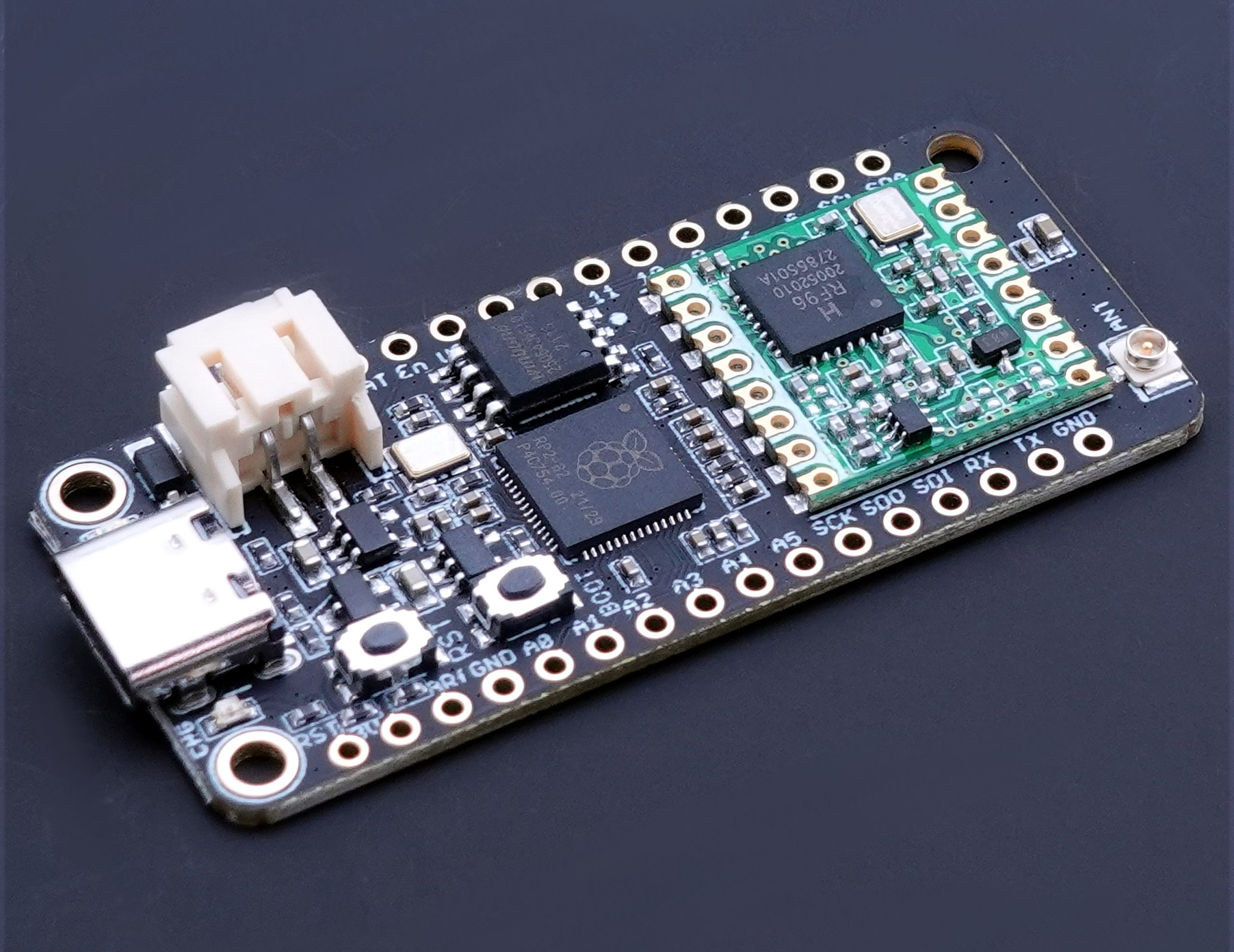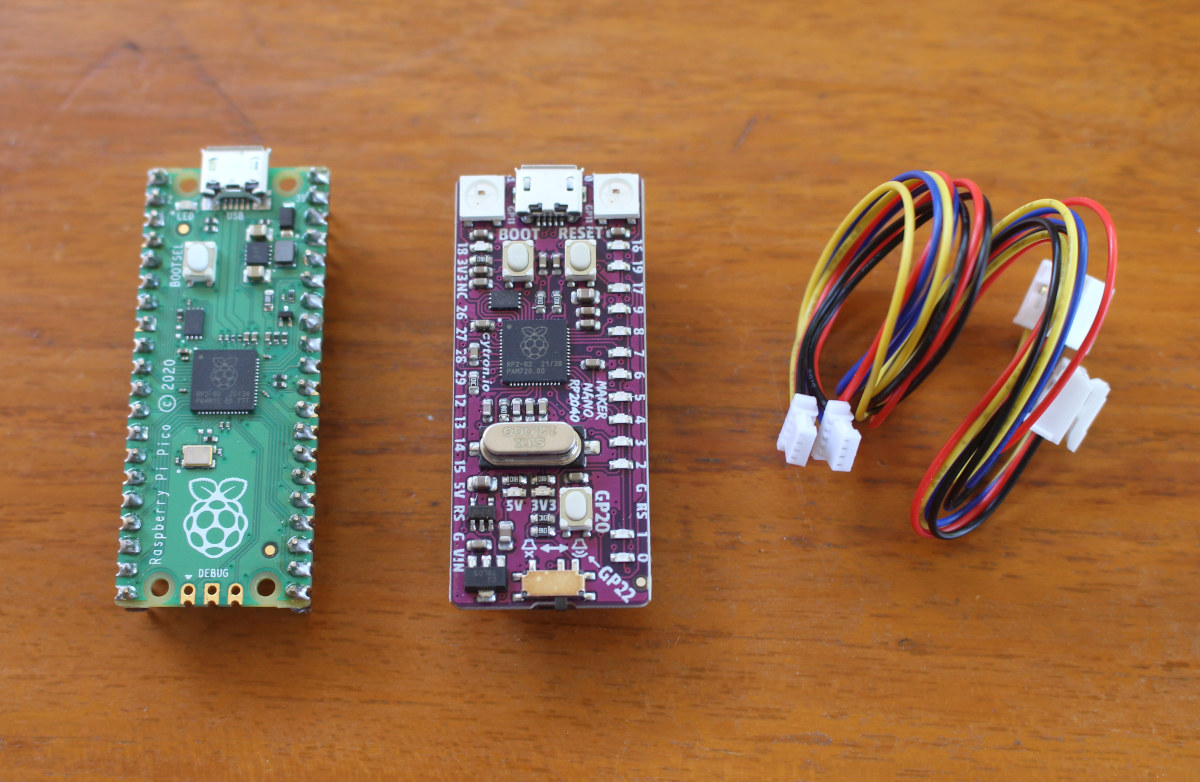Smart Bee Designs’ Bee S3 is an ultra-low-power development board based on Espressif ESP32-S3 WiFi & Bluetooth microcontroller that consumes less than 20 uA in deep sleep mode allowing the board to theoretically last over 5 years under specific conditions. The board provides WiFi 4 and Bluetooth 5 LE connectivity, features a battery voltage monitoring circuitry to check the battery charge level, a USB Type-C port for power and programming, plus 20 through holes for extensions such as connecting sensors, and so on. Bee S3 specifications: Wireless module – Espressif Systems ESP32-S3-MINI-1 module (PDF datasheet) with ESP32-S3 dual-core Xtensa LX7 processor with WiFi 4 and Bluetooth 5.0 connectivity, 4MB or 8MB QSPI flash, PCB antenna USB – 1x USB Type-C port for power and programming Expansion – 2x 10-pin headers with up to 15x GPIO, 8x ADC, touch support, I2C, SPI, UART, 5V In/out, 3.3V out, and GND Misc – […]
$30 compact multi-sensor board works with any microcontroller with I2C (Crowdfunding)
SENSE is a compact multi-sensor board supporting measurement of air quality, sound, light intensity, temperature, proximity, etc… and designed by Zack Seifert, a seventeen-year-old electronics enthusiast and president of his school’s robotics team. SENSE can work with any microcontroller or processor with I2C (hardware or implemented with bit-banging), including Arduino and Raspberry Pi boards. and an extra Qwiic connector allows for additional sensors. SENSE board specifications: Storage – MicroSD card holder Sensors
Mini keyboards launched with ESP32-C3 or Raspberry Pi RP2040 MCU
Last week, when I saw LilyGO T-Keyboard based on ESP32-C3, I didn’t think much of it and did not expect many people to be interested, so I skipped it. But earlier today I also noticed Solder Party launched a very similar-looking product – the BB Q20 Keyboard with Trackpad – based on Raspberry Pi RP2040 MCU. So after all, it might be worthwhile to look into those mini keyboards for makers. LilyGO T-keyboard Hardware specifications: SoC – ESP32-C3 single-core RISC-V processor with Wi-Fi 4 and Bluetooth 5.0 LE connectivity Display – 0.99-inch TFT color LCD QWERTY keyboard Battery – 400mAh built-it battery Power Supply – 5V via USB port Dimensions – 6.9 x 5.3 x 1.7 cm The company promotes it as a mini Bluetooth keyboard for iOS and Android smartphones, as well as Windows machines, but also has plans to make it work with their T-Echo LoRa messaging hardware. […]
Badger 2040 is a programmable E-Ink display powered by Raspberry Pi RP2040
Pimoroni Badger 2040 is a Raspberry Pi RP2040 board equipped with a 2.9-inch black and white E-Ink display with 296 x 128 resolution and programmable with C/C++, MicroPython, or CircuitPython. The board is not just an ePaper badge, as it also comes with five buttons, and expansion capability through a Qwiic/STEMMA QT connector plus some pads with UART, I2C, interrupt, and power signals. Badger RP2040 specifications: MCU – Raspberry Pi RP2040 dual-core Arm Cortex M0+ running at up to 133Mhz with 264kB of SRAM Storage – 2MB QSPI flash Display – 2.9-inch B&W E Ink display with 296 x 128 pixels resolution, ultrawide viewing angles, ultra-low power consumption; Dot pitch – 0.227 x 0.226 mm USB – 1x USB Type-C port for power and programming Expansion Qwiic/STEMMA QT connector 10 pads with I2C, an interrupt pin, UART, SWC/SWD, 3.3V, GND Misc 5x front user buttons Reset and boot buttons (the […]
Getting started with Maker Nano RP2040 using CircuitPython: Blinky, RGB LED, and Piezo Buzzer
CNXSoft: This getting started guide was initially posted in Thai language by Suthinee Kerdkaew, and I’ve just translated her work into English with some minor edits. As discussed in an earlier article, Maker Nano RP2040 is a board following the Arduino Nano form factor, but with a more powerful Raspberry Pi RP2040 microcontroller. The board also comes with plenty of LEDs, as well as two RGB LEDs, and a piezo buzzer for audio output. Mr. Jean-Luc Aufranc has just given me a Maker Nano RP2040 board received from Cytron for review. I’ve never used a board before, so it’s my first experience, and in this article, I’ll try to program Maker Nano RP2040 with CircuitPython with three demos: a blinky sample, changing the color of the RGB LEDs, and playing a melody through the piezo buzzer. Let’s see if I can do it. Let’s get started. I first downloaded the […]
Waveshare CM4-Duino – An Arduino compatible carrier board for Raspberry Pi CM4
Waveshare CM4-Duino is a carrier board for Raspberry Pi Compute Module 4 (CM4) that follows Arduino UNO R3 form factor while offering HDMI output, a MIPI CSI camera interface, a USB interface, and even an M.2 M Key socket for expansion. This allows the board to reuse most Arduino shields while offering the flexibility of a more powerful Arm Linux platform that can further be expanded with an NVMe SSD or a wireless module through the included M.2 socket. Waveshare CM4-Duino specifications: Support SoM – All variants of Raspberry Pi Compute Module 4 Storage MicroSD card socket for Compute Module 4 Lite (without eMMC) variants Optional NVMe SSD via M.2 socket Video Output – HDMI up to 4Kp30 (not sure why 4Kp60 would not be supported) Camera I/F – 1x MIPI CSI-2 connector USB – 1x USB 2.0 Type-A header, 1x USB Type-C for power and programming Expansion M.2 M […]
Challenger RP2040 LoRa board combines Raspberry Pi RP2040 MCU with RFM95W LoRa module
Invector Labs is now offering a variant of the WiFi-based Challenger RP2040 board with a LoRa radio. The Challenger RP2040 LoRa board features the Hope RF RFM95W LoRa radio transceiver module instead of the ESP8285 WiFi chip found in the original board. Raspberry Pi RP2040 has already been used in combination with a LoRa module, notably in Rakwireless RAK11300 WisDuo LPWAN module and the “LoRa Expansion for Pico“, a baseboard for Raspberry Pi Pico equipped with a LoRa module, but it’s the first time I see the combination in a development board form factor, which as a potential bonus following Adafruit Feather form factor. Challenger RP2040 LoRa board preliminary specifications: MCU – Raspberry Pi RP2040 dual-core Cortex-M0+ MCU @ 133MHz with 264KB SRAM Storage – 8MB flash Wireless module – Hope RF RFM95W connected via SPI channel and some GPIOs 168 dB maximum link budget. +20 dBm – 100 mW […]
Maker Nano RP2040 offers Arduino Nano, Grove and Qwiic modules compatibility
Cytron Maker Nano RP2040 is board similar to Raspberry Pi Pico but with Arduino Nano form factor, a proper reset button, two RGB LEDs, single color LEDs for some GPIOs, a buzzer, as well as two Qwicc/STEMMA QT connectors that can also be used to connect Seeed Studio Grove modules using provided conversion cables. While the board mostly aims to be an Arduino Nano/Maker Nano upgrade, there are some notable differences with the I/O voltage being limited to 3.3V without 5V tolerance, and there are only four ADC inputs (A0 – A3) instead of eight on the Arduino Nano. Maker Nano RP2040 specifications: MCU – Raspberry Pi RP2040 dual-core Arm Cortex-M0+ microcontroller @ 125 MHz with 264KB internal RAM Storage – 2MB flash Audio – Piezo buzzer with mute switch Expansion 2x 15-pin headers with 22x GPIOs, 14x of which with LEDs,2x I2C, 2x UART, 2x SPI, 14x PWM, 4x […]


